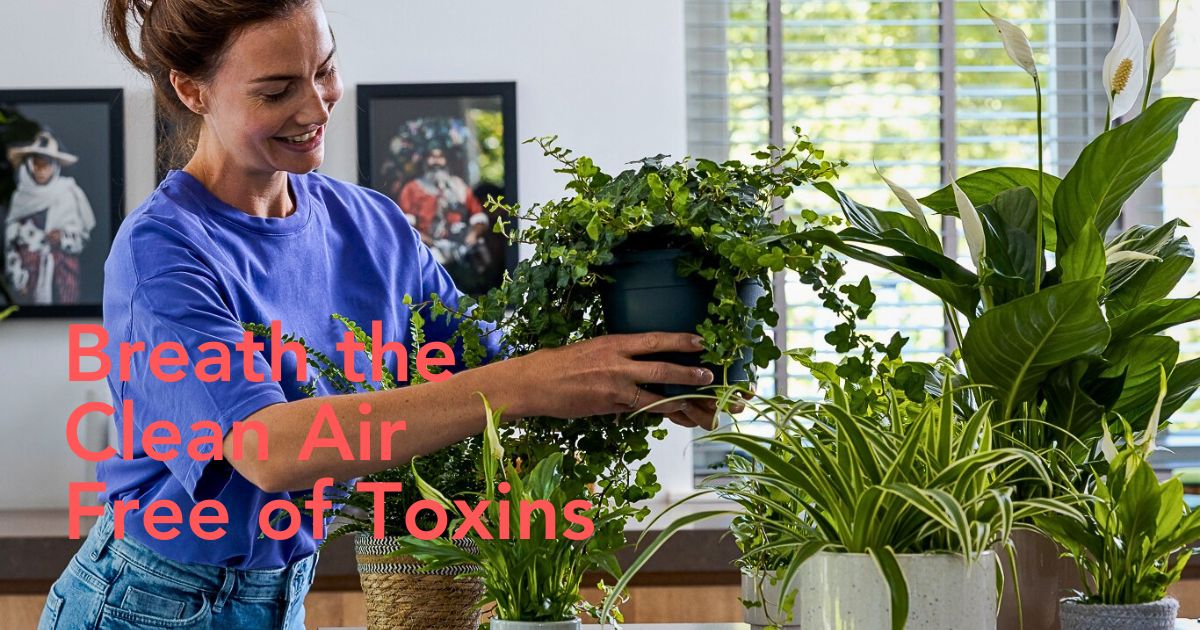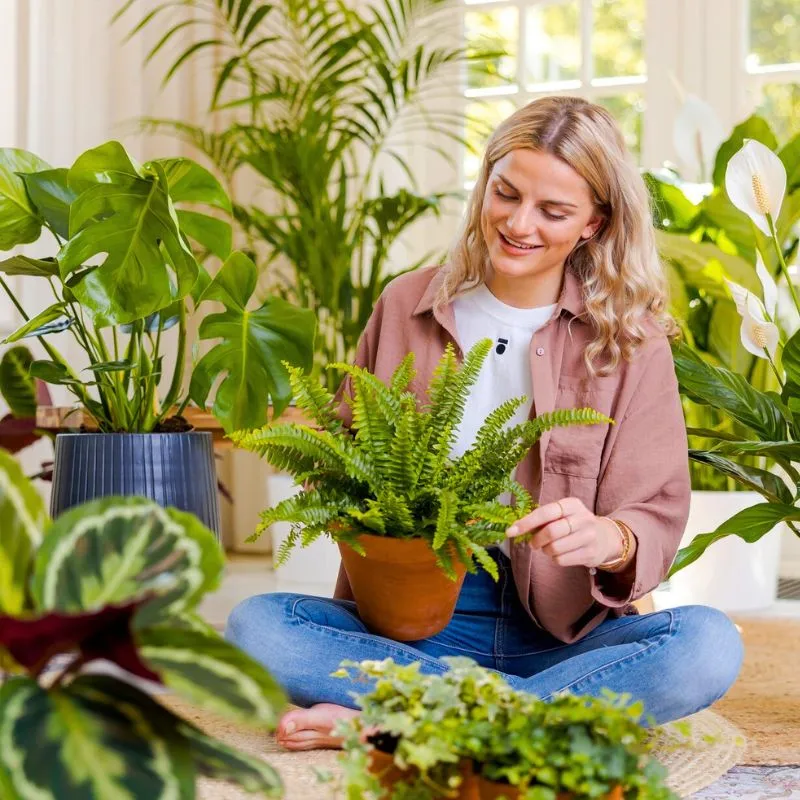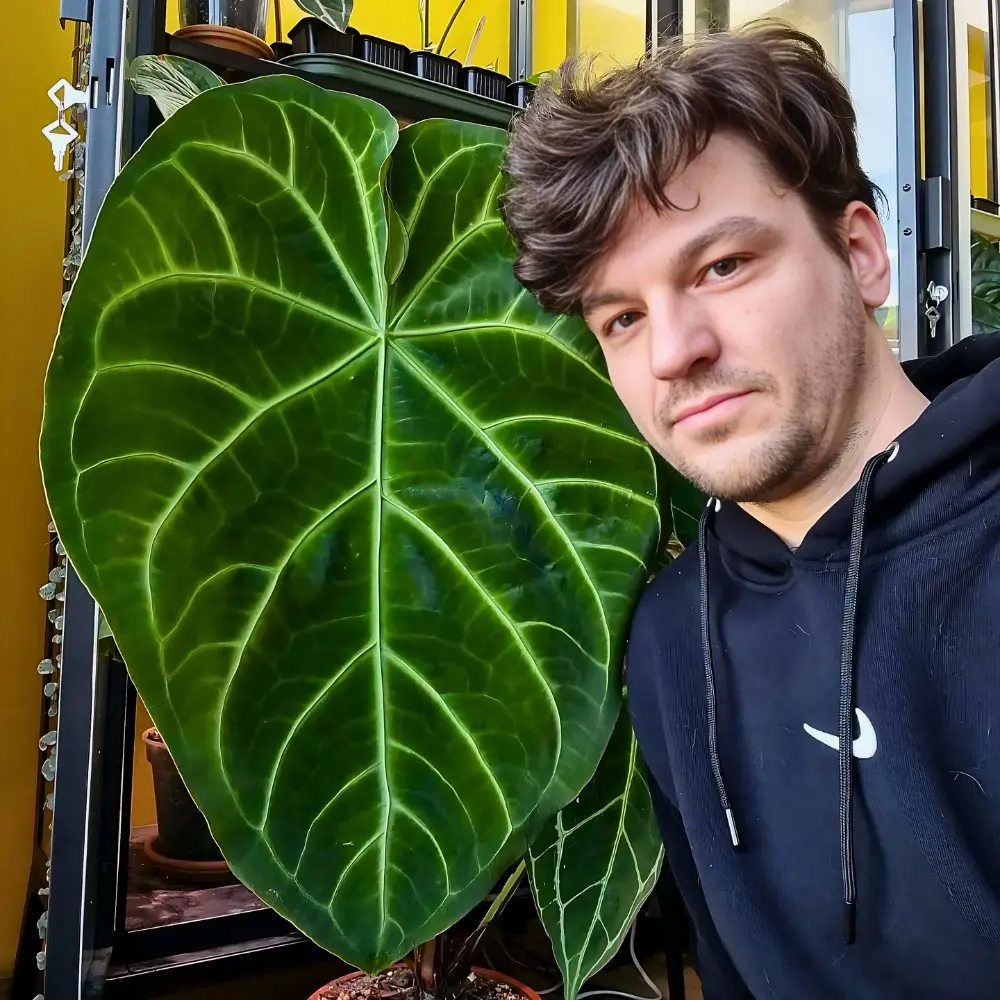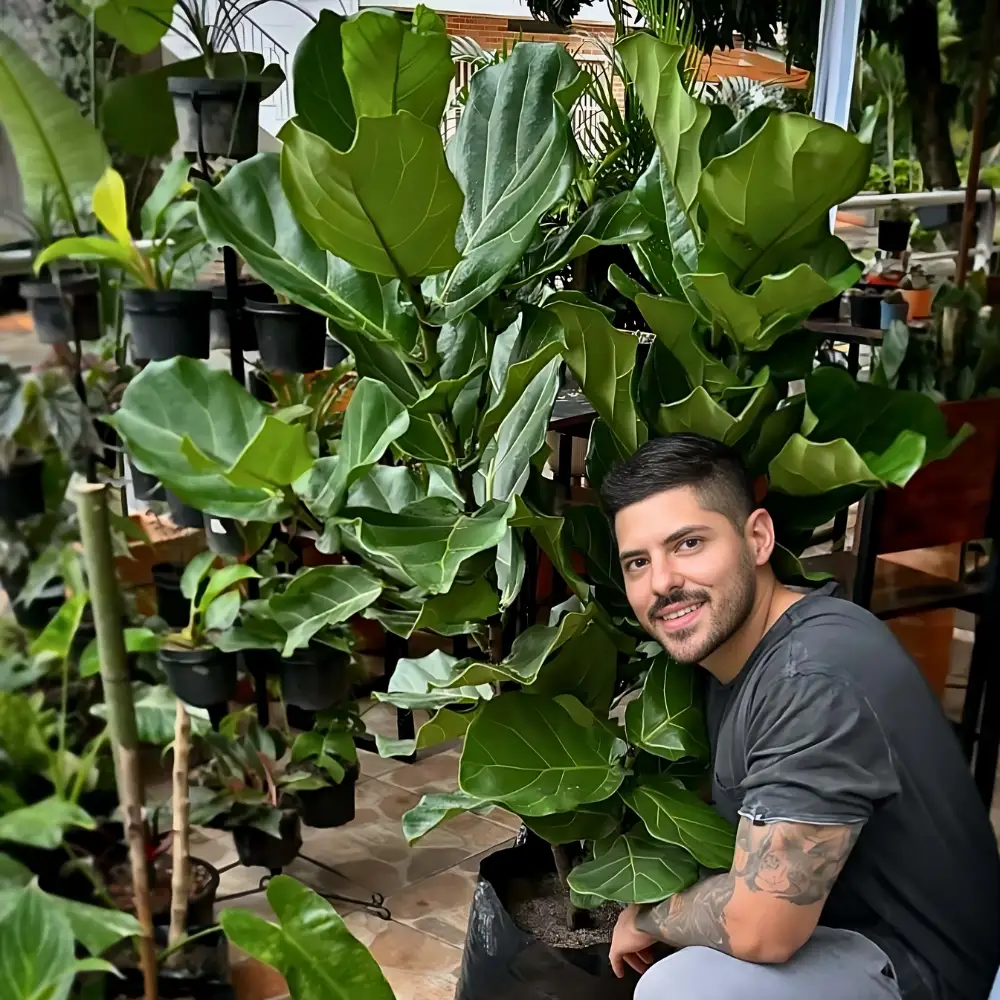Are you often concerned about your home's indoor air quality as pollution and CO₂ levels increase? Air-purifying plants are a great solution that not only removes toxins but also enhances the atmosphere of your room. You've probably heard before that plants have a great ability to keep the air fresh and clean. However, some houseplants offer additional air-purifying benefits, making them a popular choice for homes and offices.
Even better, houseplant grower collective, Air So Pure—just as their very name implies—supplies a wide range of these air-purifying houseplants, making them easily available. Just so you know, in 1989, NASA conducted a study on plants and discovered that they can absorb harmful toxins from the air, especially in enclosed spaces with little airflow. This study has been the basis for newer studies throughout the years on indoor plants and their air-purifying abilities.
The Best Air-Purifying Plants
Around the early 2000s, indoor plants that clean the air became a thing, and their popularity hasn't quite decreased ever since. Still, yet, they are especially popular now, seeing as many people nowadays spend more of their time indoors than before. Many work from home offices right within their houses. If you, therefore, want to improve your home's air quality and let plants help boost your mood and productivity at the same time, here are some of the best air-purifying plants that will do just that.
- Golden Pothos (Epipremnum aureum)
- Calathea makoyana
- Nerve Plant (Fittonia albivenis)
- English Ivy (Hedera helix)
- Dumb Cane (Dieffenbachia)
- Money Tree (Pachira aquatica)
- Bamboo Palm (Chamaedorea seifrizii)
- Snake Plant (Dracaena trifasciata)
- Rubber Plant (Ficus elastica)
- Boston Fern (Nephrolepis exaltata)
- Fiddle-Leaf Fig (Ficus lyrata)
- Dragon Tree (Dracaena marginata)
- Parlor Palm (Chamaedorea elegans)
- Peace Lily (Spathiphyllum)
- Kimberly Queen Fern (Nephrolepis obliterata)
- Monstera deliciosa
- Spider plant (Chlorophytum)
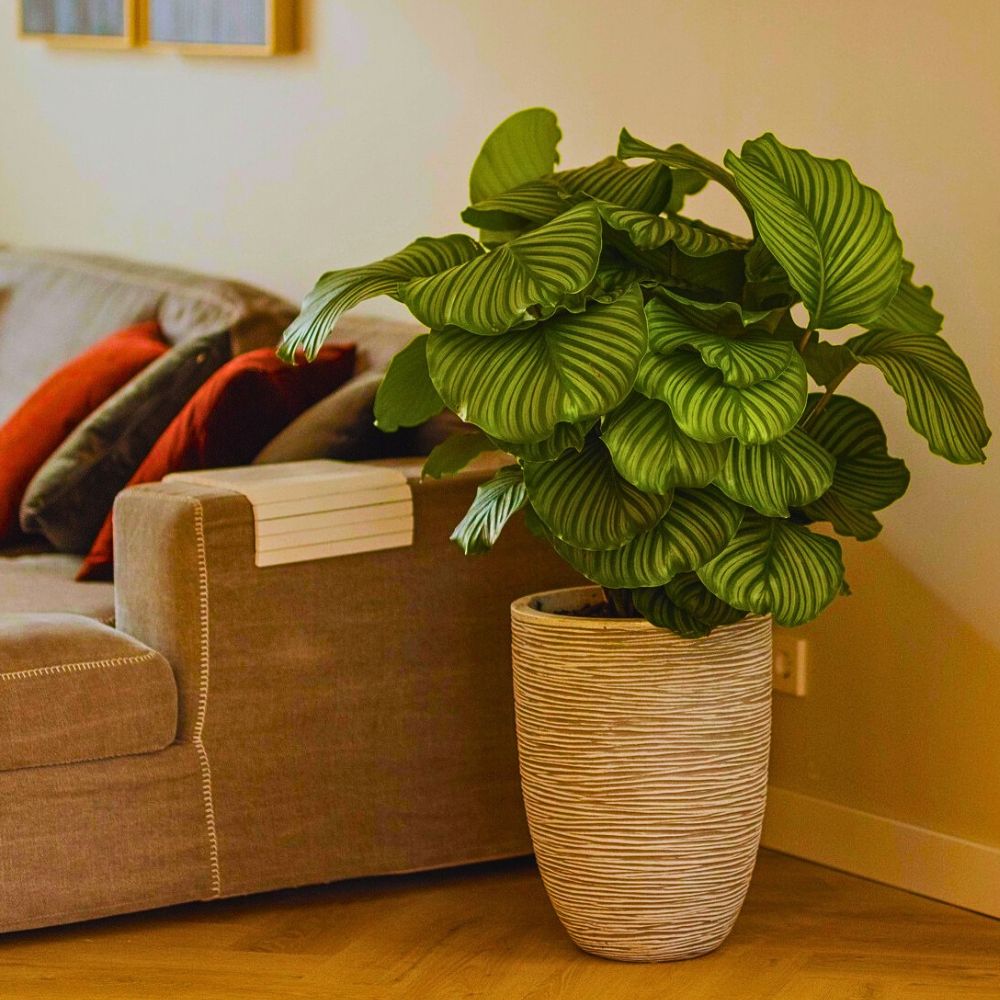
1. Golden Pothos (Epipremnum Aureum)
The golden pothos, also known as the Epipremnum aureum, is an excellent air-purifying houseplant that deserves consideration for your home. A fast-growing, trailing vine, it is renowned for its ability to remove harmful toxins, such as formaldehyde, benzene, and carbon monoxide, from the air. A key advantage of this houseplant is its ease of care. It thrives in a variety of lighting conditions, from bright, indirect light to lower-light areas, making it a versatile choice for any room in your home. Additionally, it requires infrequent watering.
This houseplant, also called devil's ivy, is not only considered one of the most effective indoor air-purifying plants but also aesthetically pleasing and adds natural beauty to the living spaces, with its heart-shaped leaves and cascading vines creating a lush, tropical ambiance, thus enhancing the overall decor of the home. Investing in a golden pothos this year can, therefore, be a smart move.

You can read all about Pothos here: 'Pothos Plants - Care & All There’s to Know About This Houseplant'.
2. Calathea Makoyana
Calathea makoyana, also known as the peacock plant, is yet another exceptional air-purifying houseplant that is well-suited for homes. This plant is renowned for its striking foliage, which features nice-looking green leaves with intricate, feather-like patterns. The peacock plant possesses an aesthetic appeal and is a highly efficient air purifier, particularly adept at removing formaldehyde, a common indoor pollutant, from the air, which also makes it an invaluable addition to any home, as improving indoor air quality becomes increasingly important for maintaining health and well-being.
The fact that the plant is adaptable to a variety of lighting conditions is another plus for the Calathea makoyana. While it prefers bright, indirect light, it can also thrive in medium-light environments, thus a versatile choice for placement throughout your home. Additionally, it has relatively modest watering requirements, hence, easily providing both aesthetic and functional benefits to a living space.
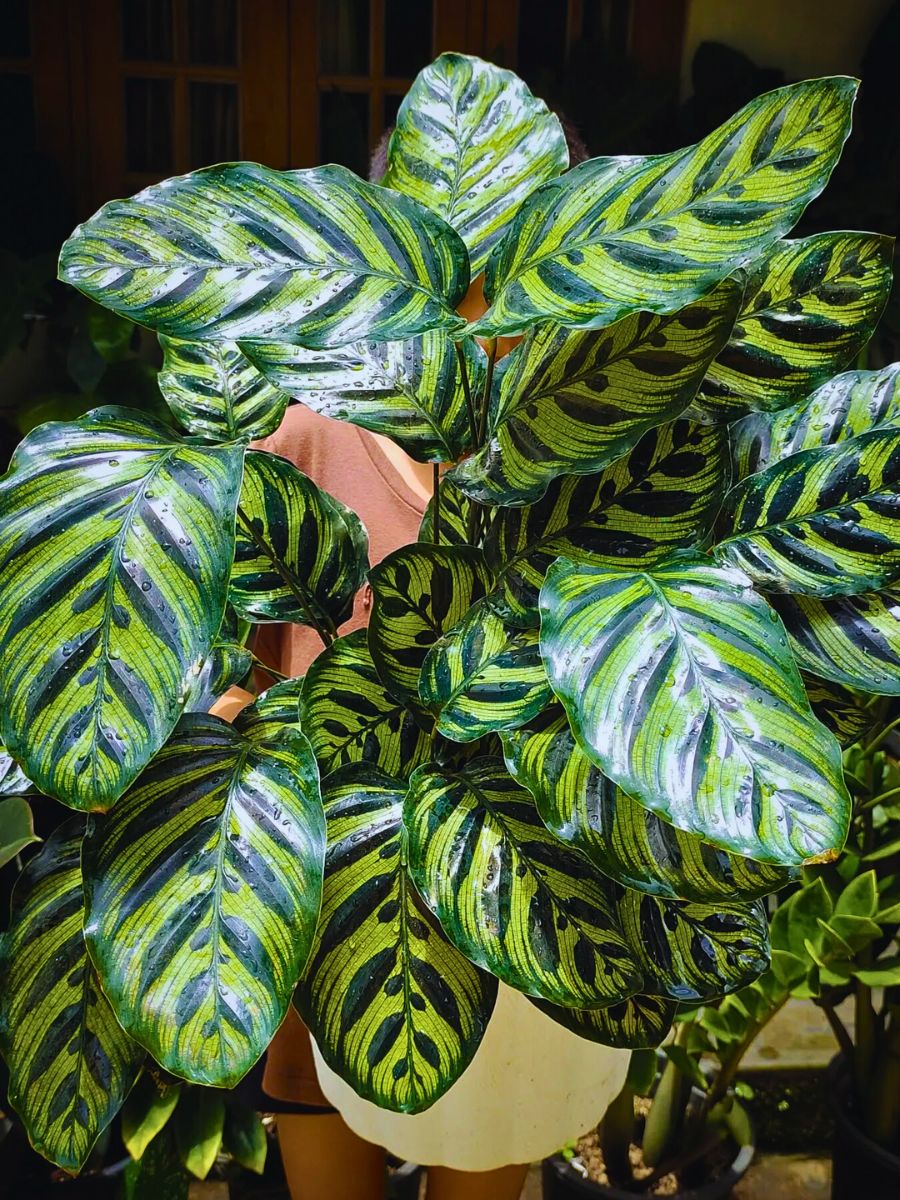
3. Nerve Plant (Fittonia Albivenis)
The nerve plant, with the scientific name Fittonia albivenis, is a beautiful and beneficial air-purifying houseplant that would be a valuable addition to any home. This plant is admired for its unique and attractive foliage, featuring bright green, vein-like patterns on its small, heart-shaped leaves. Its eye-catching appearance can create a lively and invigorating atmosphere in your living space. In terms of air purification, the plant excels at removing harmful toxins from the air, such as benzene and formaldehyde, which are commonly found in indoor environments. Normally grown as a potted houseplant, the nerve plant—a low-growing creeper that is a perfect fit for terrariums or bottle gardens—also has the unique quality of being a spreading evergreen perennial whose most popular vein color is silvery-white.
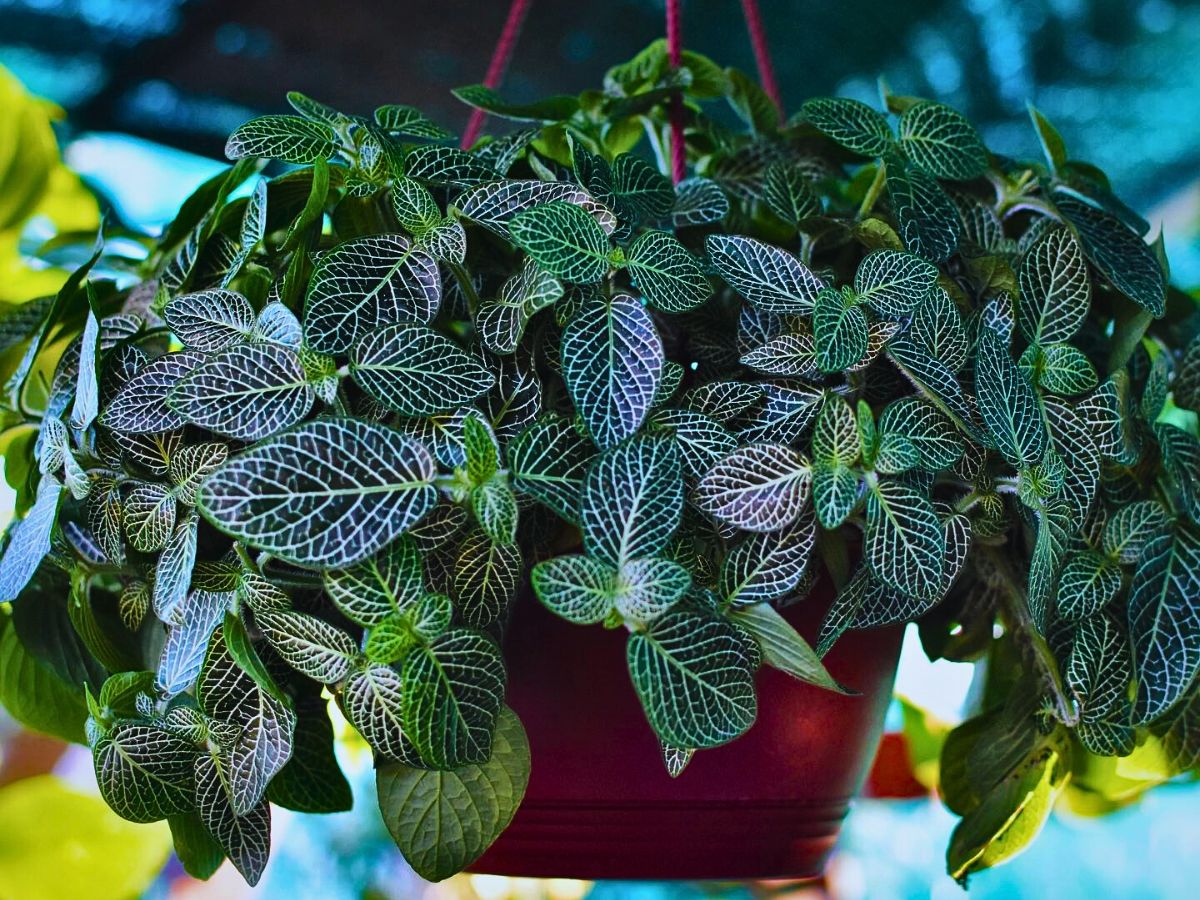
But you can also readily find varieties with veins in red, pink, white, and green. This plant is well-suited for various lighting conditions, thriving in both bright, indirect light and lower-light situations. This adaptability makes it an excellent choice for different rooms within the home. It, furthermore, prefers moderate humidity and consistent moisture, thus a great houseplant for areas like bathrooms or kitchens where humidity levels are typically higher.
4. English Ivy (Hedera Helix)
Hedera helix, the common ivy, English ivy, European ivy, or just ivy, is a species of flowering plant of the ivy genus in the family Araliaceae, native to most of Europe and western Asia. It is among those supplied by Air So Pure. This is a versatile houseplant that can be grown in many different situations. Ivies can be grown in hanging baskets, at the base of other houseplants, and in pots of their own. They are often trained on trellis frames or wire topiary forms into various formal or whimsical shapes. With that, and due to their air-purifying qualities, they make a perfect houseplant that you could invest in this year.
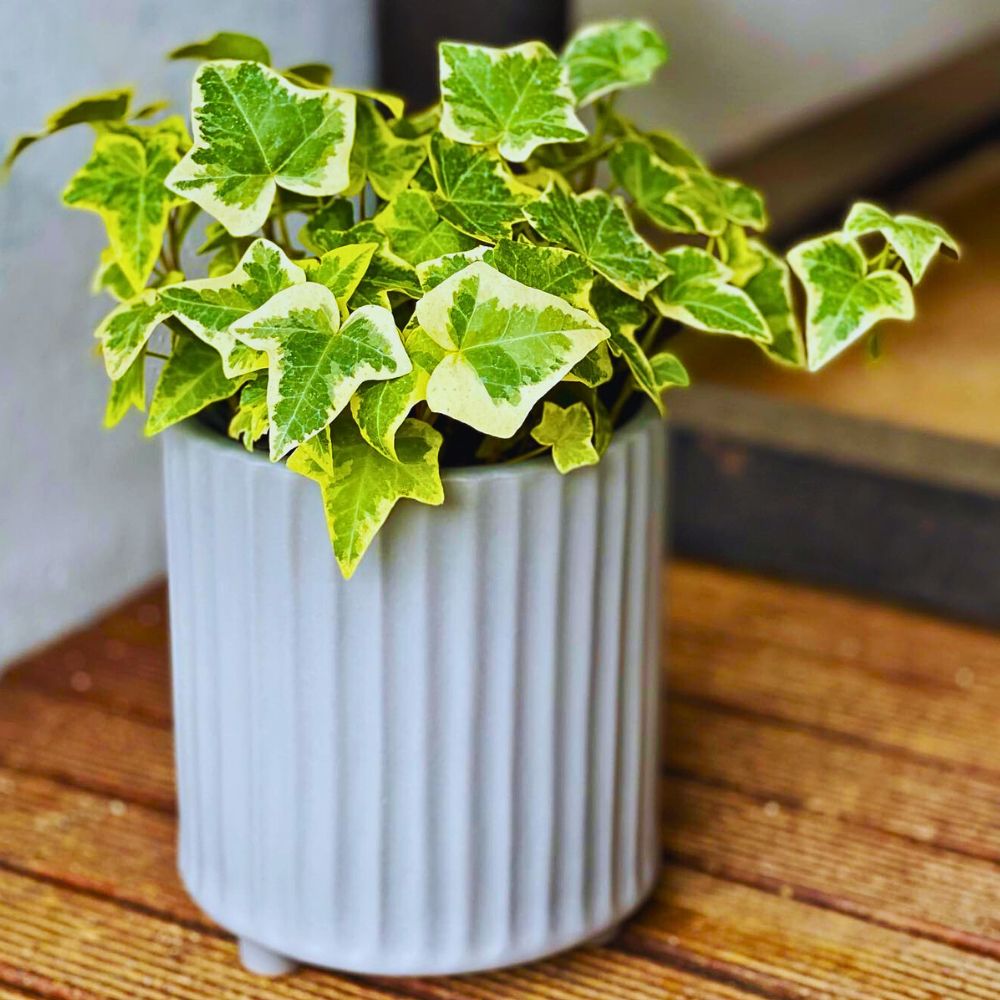
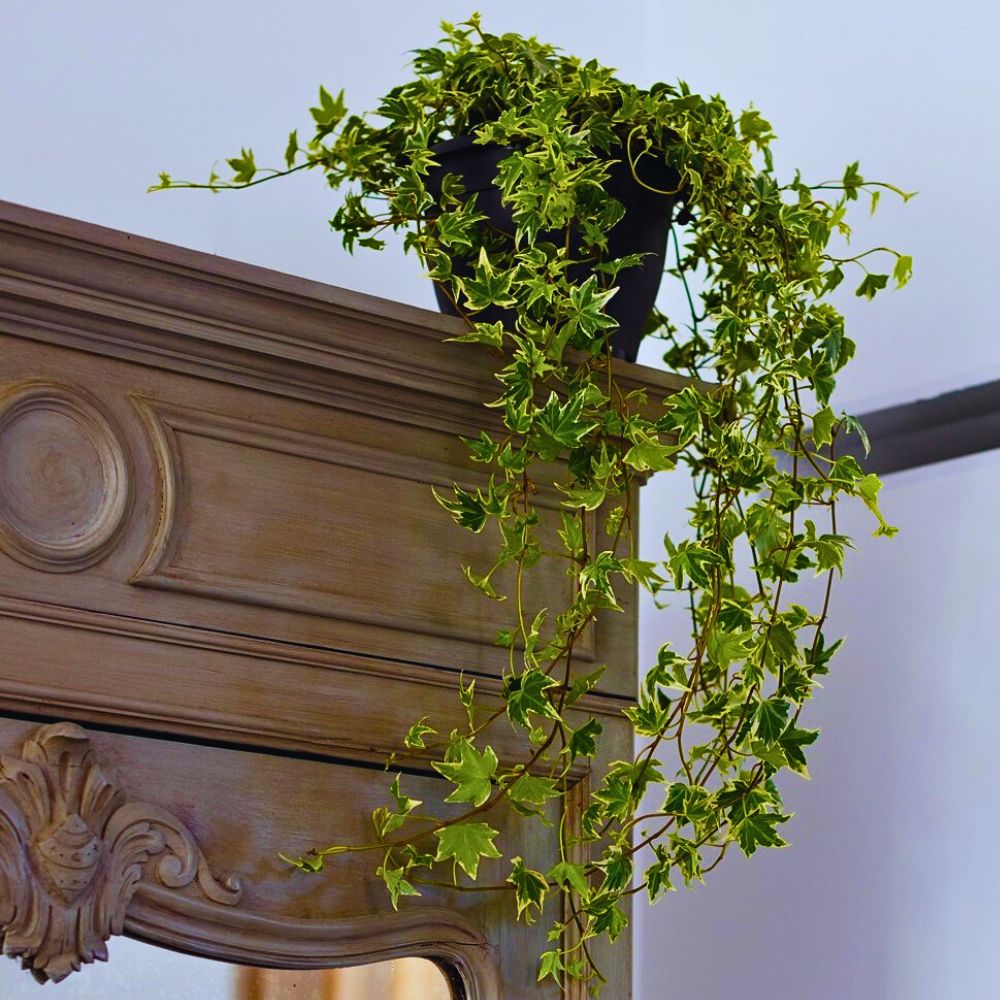
5. Dumb Cane (Dieffenbachia)
This is another striking houseplant that brings to the home a sense of tropical elegance. With its large, variegated leaves, it is a visual delight, but beyond its exotic beauty, it remains a powerful air purifier, effectively removing toxins and other contaminants from the indoor air. This makes it a valuable asset for improving indoor air quality, especially in homes where pollutants can accumulate.
A native of tropical America and the West Indies, this herbaceous plant of the arum family (Araceae) comes in numerous horticultural varieties, which are all loved for their attractive foliage and ability to tolerate low light intensities. Its cultivated varieties typically have large, simple leaves that are often variegated with other greens. Named after Johann Dieffenbach, a 19th-century German botanist, Dieffenbachia has earned the common name 'Dumb Cane' due to its toxic sap, which can cause temporary speechlessness if ingested, a reminder to handle this plant with care.
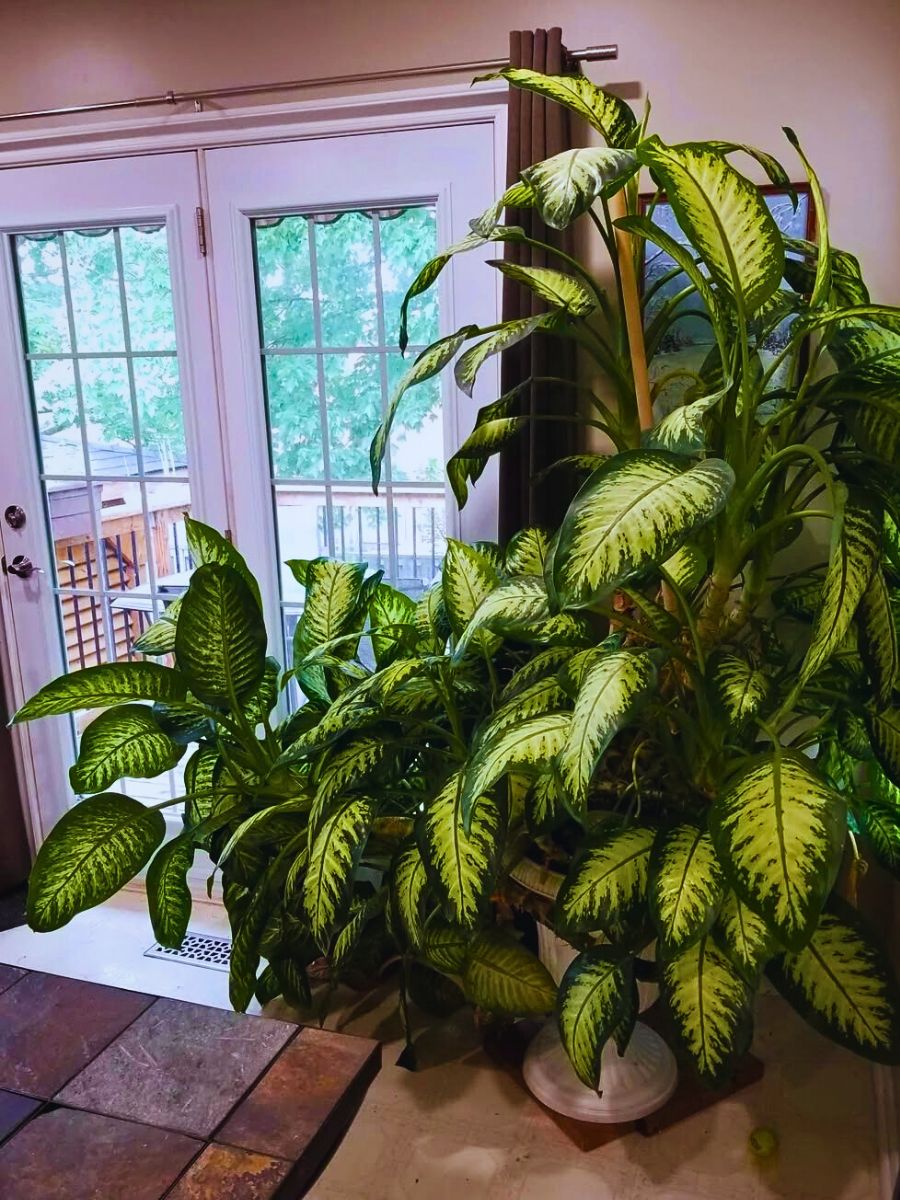
While the dumb cane is relatively low-maintenance, it's important to note that it could be toxic to pets and humans; therefore, keep it out of reach of children and animals, and handle it with gloves to avoid skin irritation. Despite this, however, its air-purifying benefits and stunning appearance make it a worthwhile addition to any home seeking a healthier and more beautiful environment. If orchids are the high-maintenance beauty queens of indoor gardening, dumb cane is the natural beauty standing in the wings, just out of the spotlight.
6. Money Tree (Pachira Aquatica)
Money tree is also called Pachira aquatica, but it is known by other common names, including water chestnut, Guiana chestnut, and Malabar chestnut. In addition, it is often commercially sold as a houseplant or bonsai under the name of money tree or money plant. Money trees typically have a distinctive, long, thin trunk that is made up of intertwined stems that are plaited together.
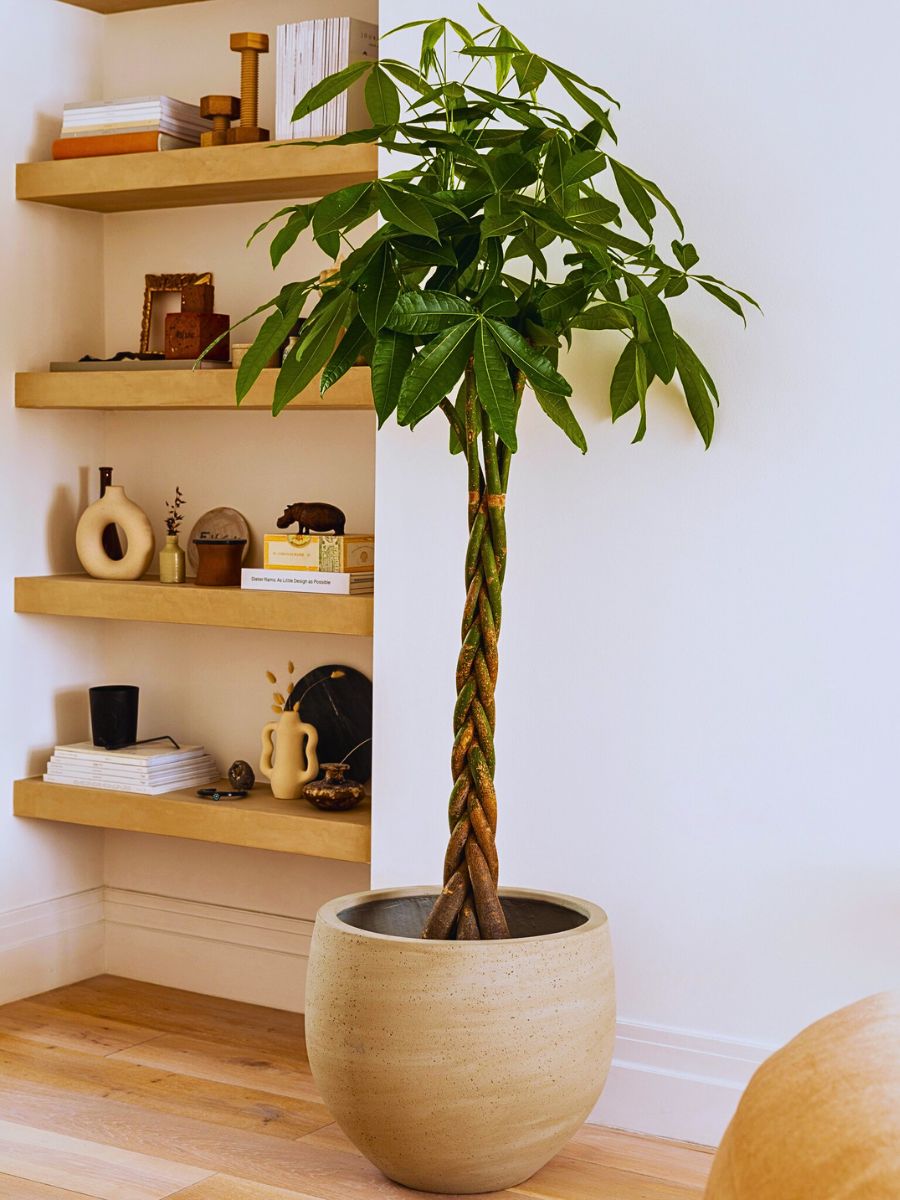
This 'plaiting' process is done when grown in a nursery, where the money tree's growers slowly braid the supple young, green trunks before they turn hard and woody while the plant still grows. Each branch sports five big, bright green leaves. Aside from that, however, the money plant has numerous other benefits, including its ability to purify indoor air. It is also one of the houseplants symbolically associated with financial success and good fortune, which makes it a popular houseplant to have in the home.
7. Bamboo Palm (Chamaedorea Seifrizii)
The Chamaedorea Seifrizii—Bamboo palm—is a member of the Arecaceae family hailing from forested regions of Central America, especially Honduras, Guatemala, and Mexico. The bamboo palm produces about ten or fifteen feathery, dark green fronds per cane. The stems are thick and covered with tan fiber that looks like bamboo. It does best in bright, indirect sunlight.
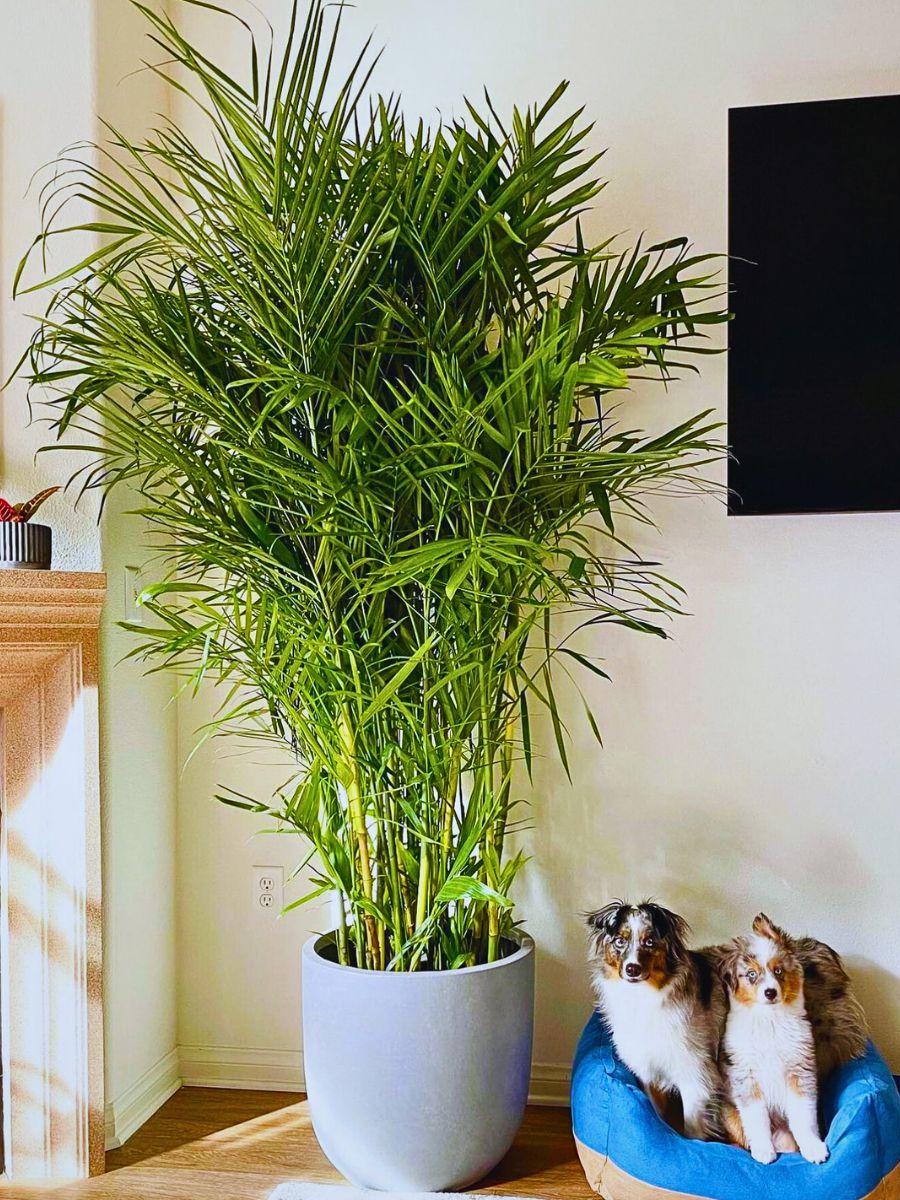
Keep in mind that this plant naturally grows as an understory plant in forests. It has a good shade tolerance and is happy with filtered light or dappled sunlight. And more than that, it can make indoor air quality clean and free from harmful contaminants.
8. Snake Plant (Dracaena Trifasciata)
Dracaena trifasciata is a species of flowering plant in the family Asparagaceae, native to tropical West Africa from Nigeria east to the Congo. Also known as mother-in-law's tongue, this yellow-tipped succulent releases oxygen at night, helping you to breathe better while sleeping. It is one of the best plants for filtering the air of formaldehyde, xylene, benzene, toluene, and trichloroethylene, thus an ideal plant to invest in for your home.
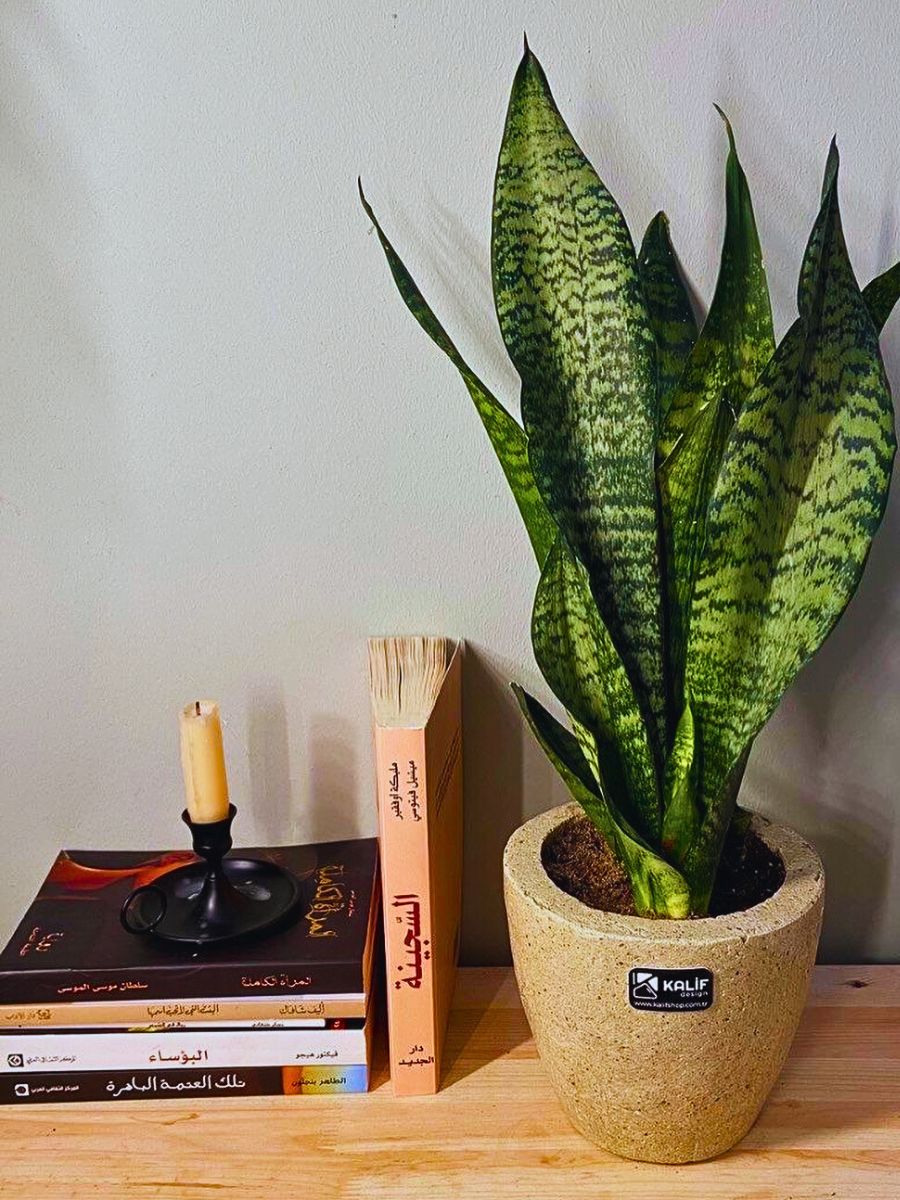
9. Rubber Plant (Ficus Elastica)
These burgundy evergreen trees originated from India; they’re a very hardy plant that loves bright, filtered light and weekly watering in summer and fortnightly watering in winter. Rubber plants can grow in a small pot or be encouraged to grow into a large indoor tree in pots or straight in the ground. These plants can remove harmful components like xylene, benzene, formaldehyde, and trichloroethylene from the indoor air.

10. Boston Fern (Nephrolepis Exaltata)
Another great houseplant on the air-purifying plants list is the Boston fern. Scientifically called Nephrolepsis exaltata, the Boston fern is a graceful and lush houseplant that could also bring a touch of the outdoors indoors. Its delicate, feathery fronds usually create a sense of tranquility and add a touch of green in indoor spaces. This easy-to-grow plant is known for its sword-shaped fronds, which make it perfect for a hanging basket or pedestal. Beyond its beauty, this plant is a natural air purifier, effectively removing toxins like formaldehyde and xylene from the air. This makes it an excellent choice for improving indoor air quality, particularly in homes with high levels of pollutants.
The Boston fern also thrives in bright and indirect light, prefers humid environments, and requires consistent moisture. You can, therefore, keep it happy with regular misting, moist soil, and also positioning it in indirect sunlight near windows, balconies, and patios. This houseplant is relatively low-maintenance, making it a good choice for busy homeowners. However, it does require regular misting to maintain its humidity levels.
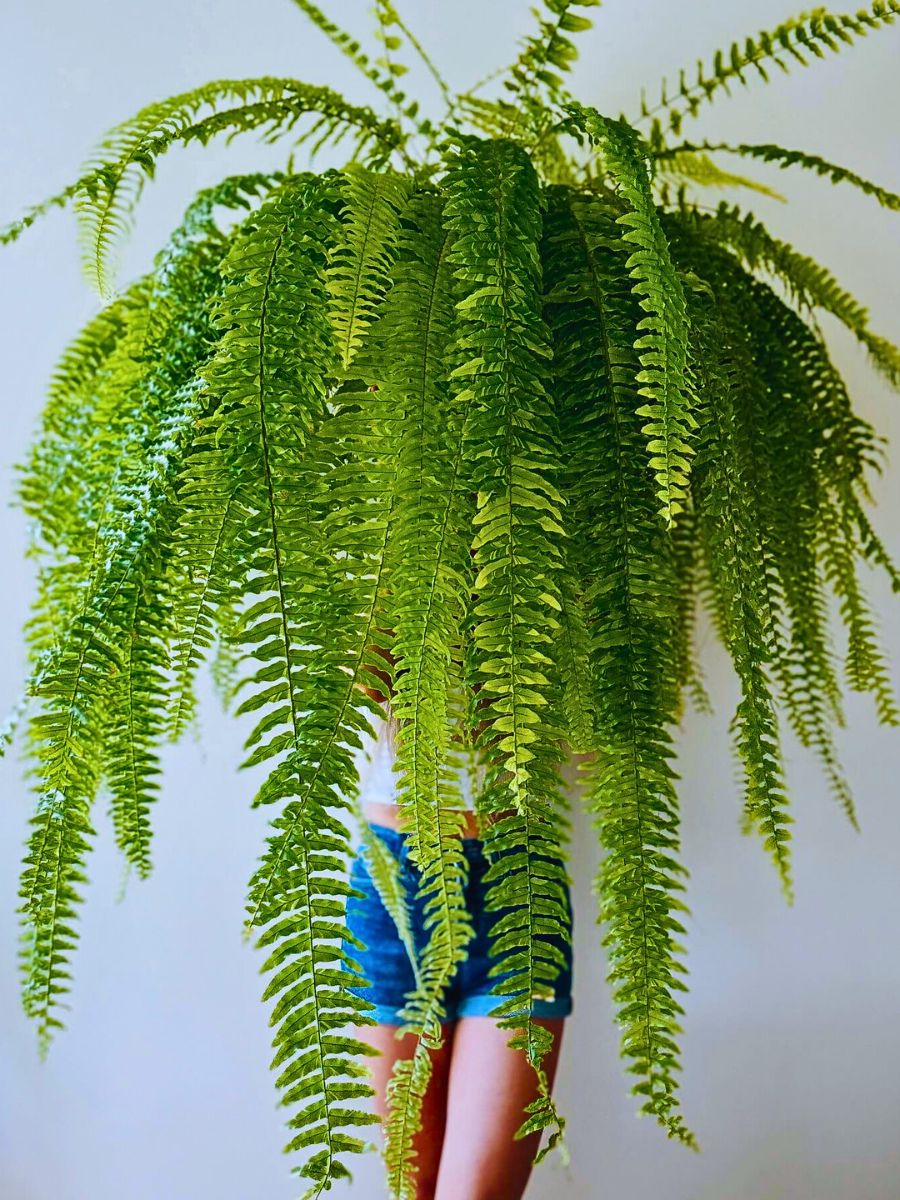
11. Fiddle-Leaf Fig (Ficus Lyrata)
The fiddle-leaf fig, also known as the Ficus lyrata, not only graces the covers and photos of many design publications but also brings drama and height, and ties entire rooms together with its tall stature and enormous, elegant leaves when grown indoors as a houseplant. What some people don’t realize is that fiddle leaf figs need to be positioned directly in front of a window, despite where you’ve seen them placed in photos.
These houseplants can be a bit tricky to take care of while they still acclimate to your indoor space, until you learn their care regimen, especially their watering schedule. Even so, these houseplants are more than worth the work because they possess many benefits, including their air-purifying properties. You can always get this houseplant from Air So Pure.
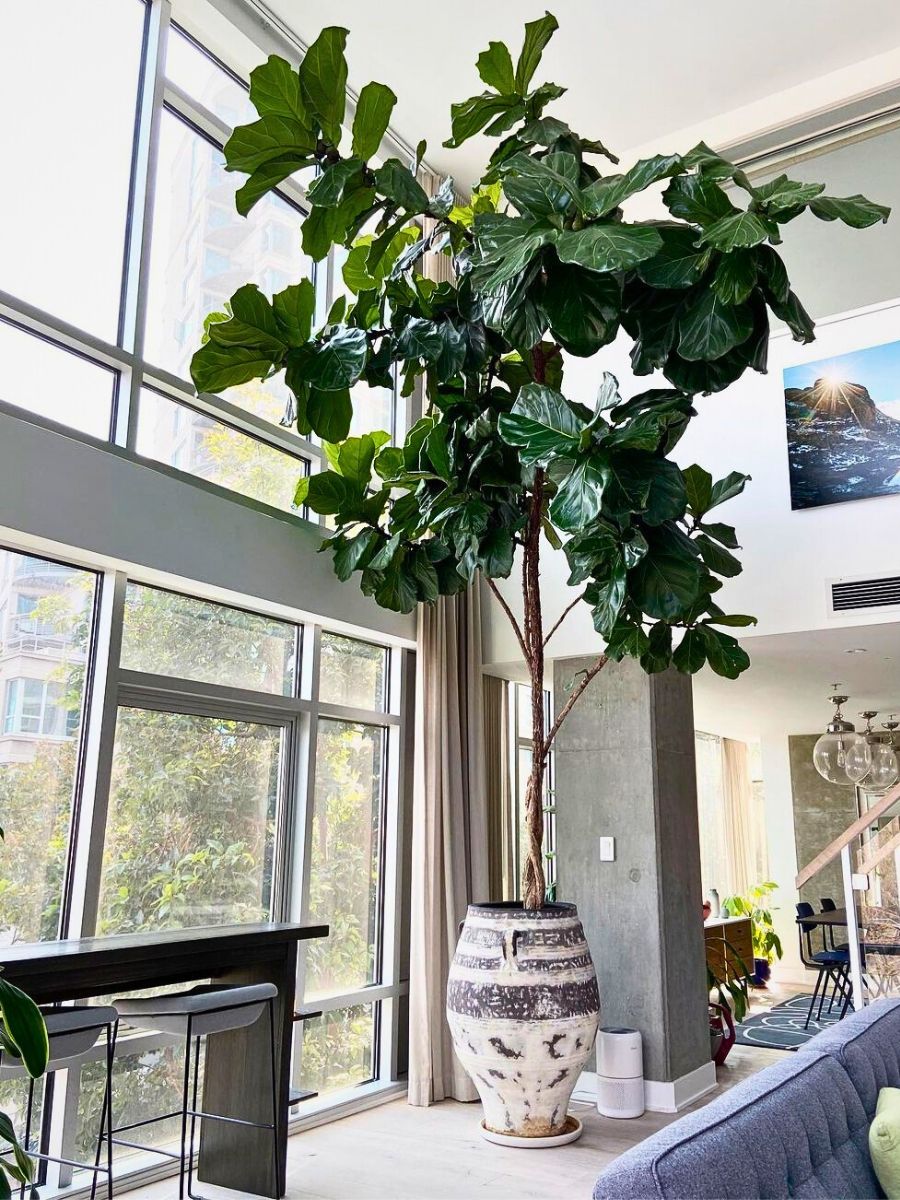
12. Dragon Tree (Dracaena Marginata)
The Dragon Blood Tree (Dracaena marginata) is a resilient houseplant that possesses a hint of the tropics, which it infuses into a home wherever it is grown. It has distinctive, spiky leaves with red margins, which bring a dramatic flair to the space. Even so, this beauty is a natural air purifier, effectively removing different toxins from the air. It is, therefore, a valuable asset for improving indoor air quality, especially in homes where these pollutants are common. Native to Madagascar, the eye-catching spiky tree is known as a great entry plant for household gardeners—it's easy to care for, drought-tolerant, and nearly indestructible.
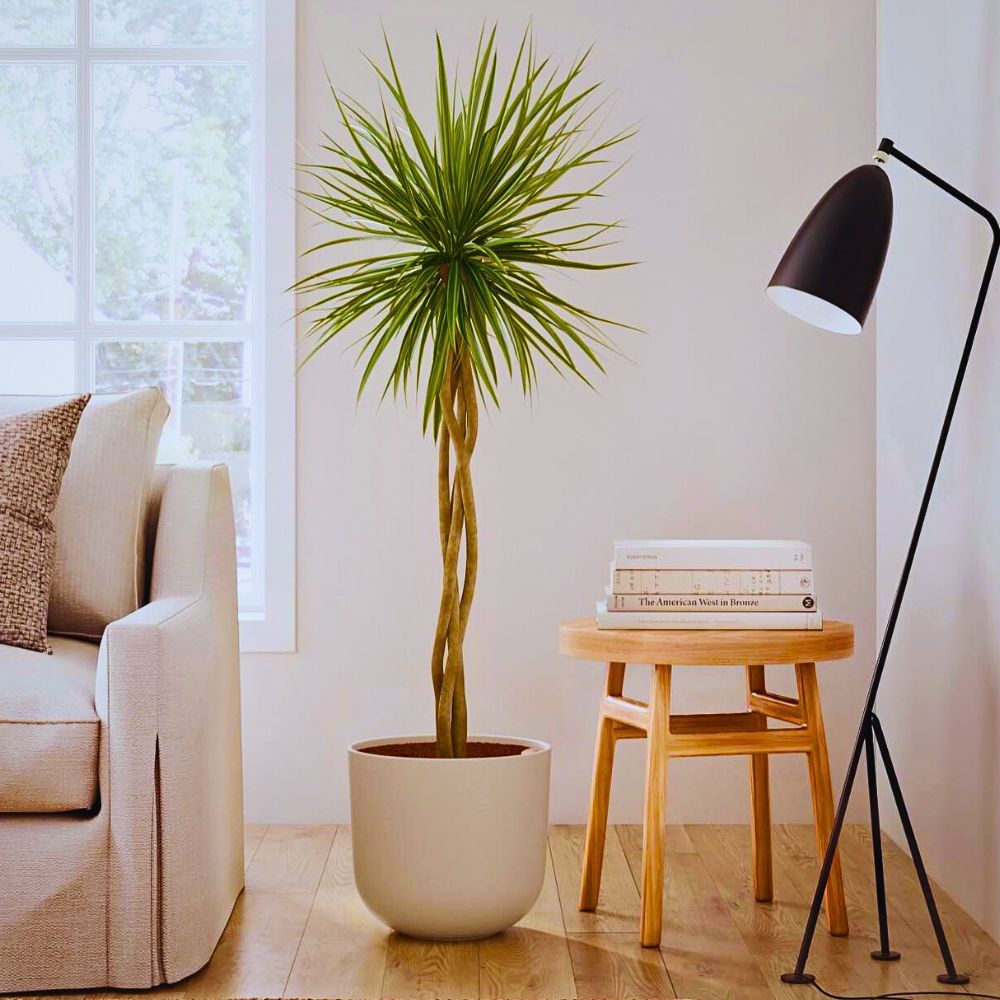
The slow-growing plant can be planted year-round and boasts tiny white flowers in the spring (though it rarely flowers indoors). While this plant is relatively low-maintenance, tolerating a range of light conditions and requiring infrequent watering, it prefers well-draining soil and should be allowed to dry slightly between waterings. It is, however, a great addition to your collection of air-purifying plants.
13. Parlor Palm (Chamaedorea Elegans)
The beautiful parlor palm (Chamaedorea elegans), also known as Bella palm or tabletop palm, has long, shiny green leaves. Parlor palms are known to remove harmful chemicals such as benzene and trichloroethylene from the air. The plants do best in bright, filtered light with little watering. It is, therefore, better to underwater your parlor palm than to overwater it. Expect to water them every 1-2 weeks. These plants are also pet-safe, so you can keep them without worrying about your pet’s health. They are a good addition to your indoor air-purifying plant collection.
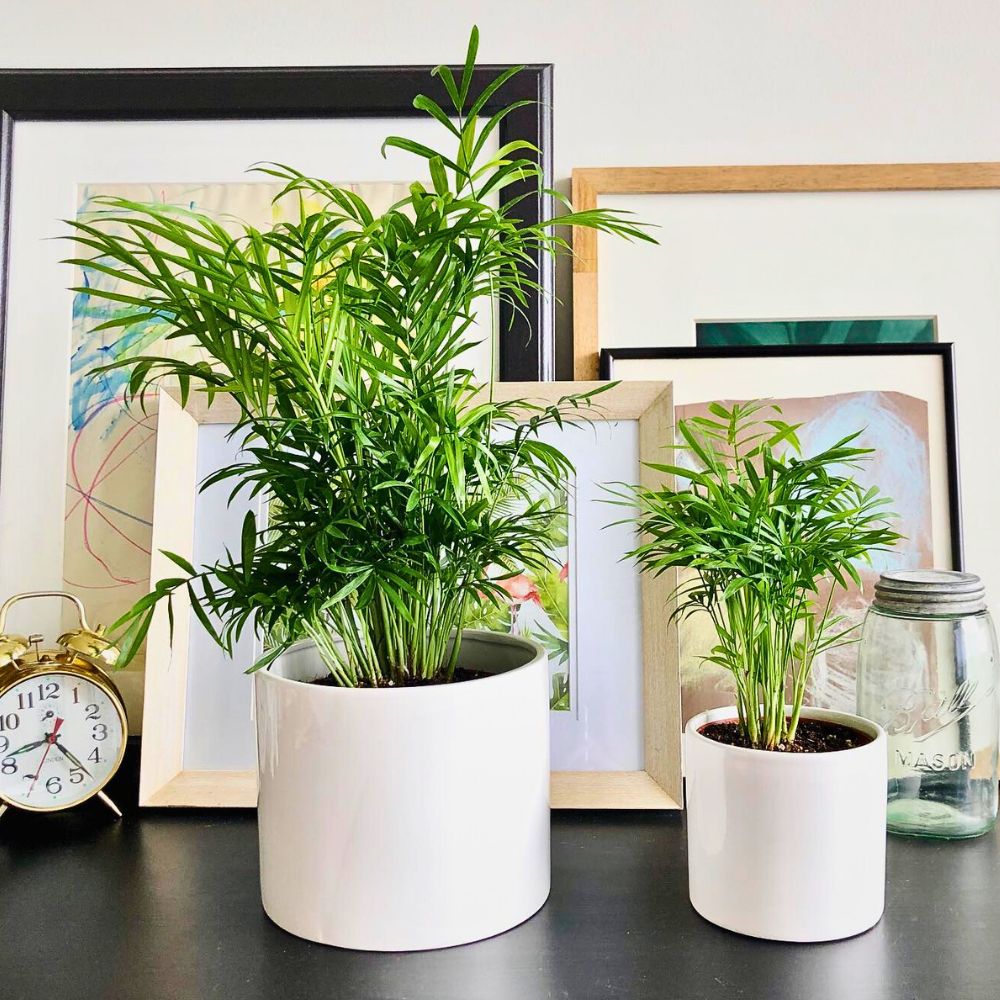
14. Peace Lily (Spathiphyllum)
Peace Lily (Spathiphyllum), also supplied by Air So Pure, is a stunning and effective air-purifying houseplant that also brings elegance and tranquility to the home. Its graceful, white spathes (modified leaves) surround the actual flowers, creating a beautiful contrast against the lush, dark green foliage. This houseplant is a natural air purifier, effectively removing toxins like formaldehyde, benzene, and ammonia from the air.
When growing them, note that peace lilies need bright, filtered light and prefer warmer, humid climates. Therefore, they need to be watered and misted frequently in the summer. You can get away with less watering in the winter, but be careful not to let the soil dry out.
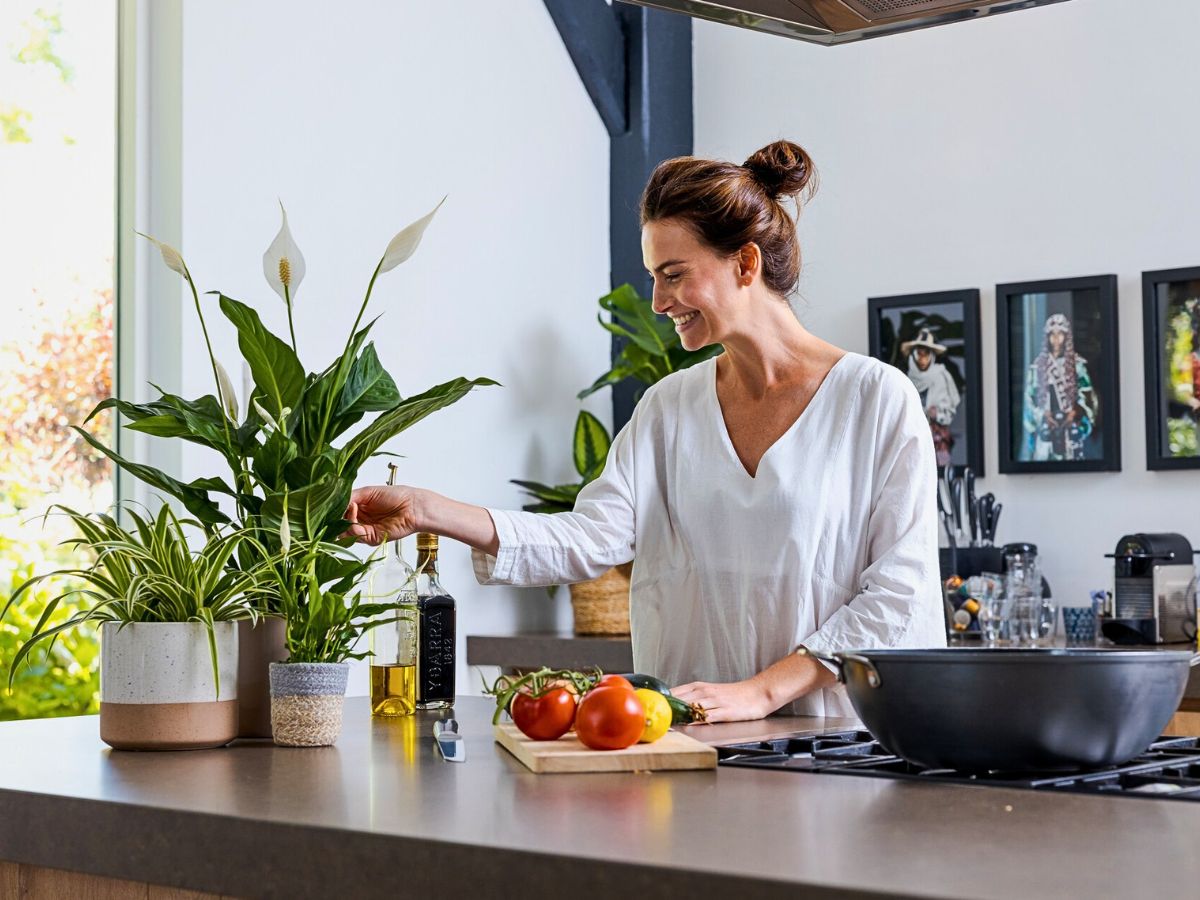
15. Kimberly Queen Fern (Nephrolepis Obliterata)
The Kimberly Queen Fern is a dense evergreen fern with a shapely form and gracefully arching fronds. Also known as the sword fern for its straight and narrow, upright leaves. It originated from Australia and is easy to grow indoors and out. This plant is highly effective at removing common indoor air pollutants like formaldehyde, xylene, and toluene. These chemicals can be released from various household products and furnishings, and exposure to them can cause health issues. The fern's leaves and roots can absorb these pollutants, purifying the air, helping improve overall indoor air quality. This can provide relief for those suffering from respiratory issues or allergies. The fern also releases oxygen through photosynthesis, further enhancing the air.

In addition to its air-purifying abilities, the Kimberly Queen Fern is an attractive, lush-looking plant that can enhance the decor of any indoor space. Its arching fronds and delicate foliage add a touch of greenery and natural beauty. Compared to many other houseplants, the Kimberly Queen Fern is relatively low-maintenance. It does not require frequent pruning or fertilization and can thrive in a variety of indoor conditions as long as it receives adequate moisture and indirect light. Essentially, it performs well in the sun and the shade. The plant is fast-growing, full, and beautiful, thrives in containers, and makes for an interesting hanging basket plant, thus an easy-to-care-for air purifier.
16. Monstera Deliciosa
The Monstera deliciosa, with its distinctive Swiss cheese-like leaves, is also one of the most effective air-purifying houseplants. This stunning tropical plant transforms the indoor environment by removing harmful toxins like formaldehyde and benzene while converting carbon dioxide into fresh oxygen. With its large, glossy, fenestrated leaves creating maximum surface area for air filtration, this Monstera serves as both a striking decorative statement and a powerful natural air cleaner.
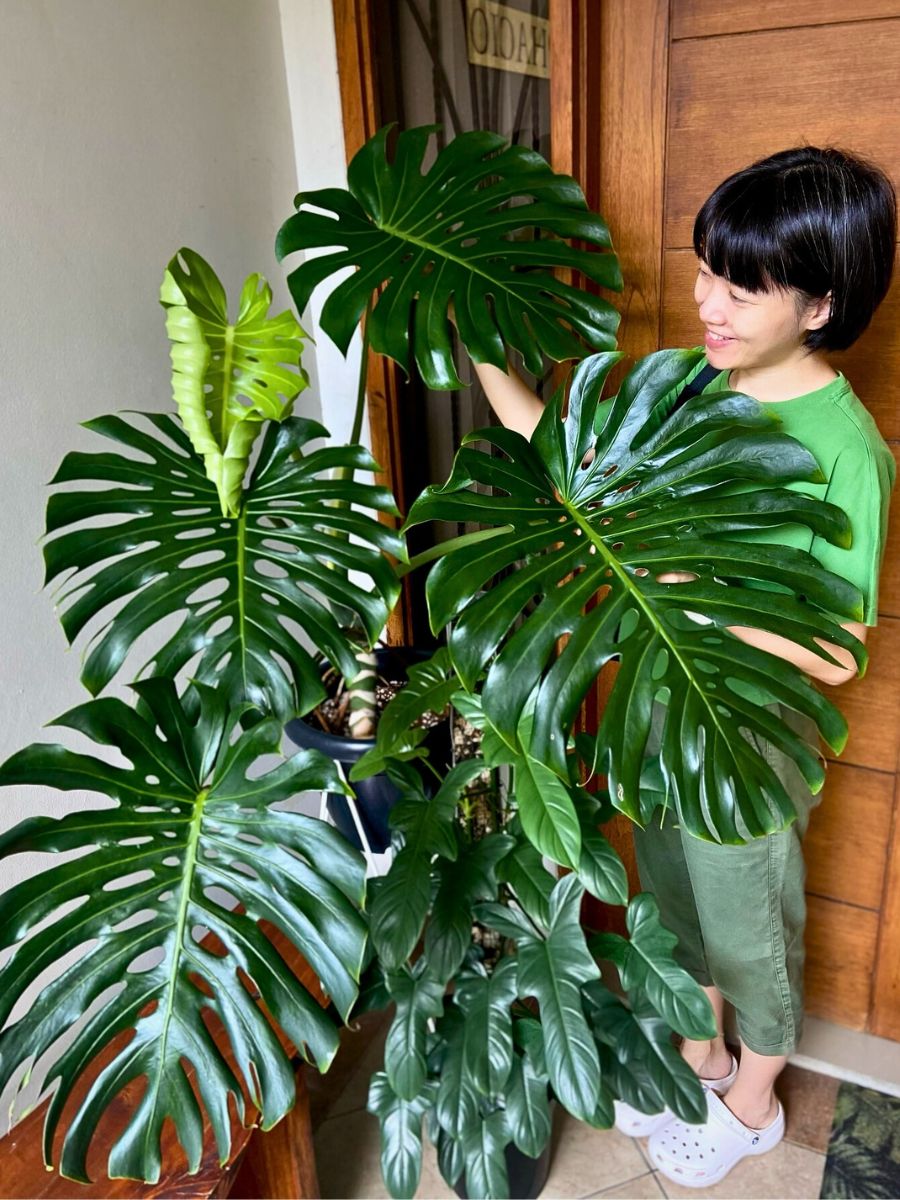
This low-maintenance beauty thrives in bright, indirect light and requires minimal care, making it perfect for busy lifestyles while continuously working to enhance your home's air quality. Also supplied by Air So Pure, this scientifically proven air purifying plant also brings the rejuvenating essence of the tropics to the indoor space.
17. Spider Plant (Chlorophytum)
Chlorophytum, commonly known as the spider plant, is a natural air purifier recognized for removing harmful pollutants like formaldehyde, xylene, and toluene from indoor air. Also called Grass lily, because of its ribbon-shaped leaves and because long shoots with small white flowers form every year, studies have confirmed this plant's ability to improve air quality by absorbing toxins and converting carbon dioxide into oxygen. It is easy to care for and safe for pets; thus, an excellent choice for a healthier indoor environment.
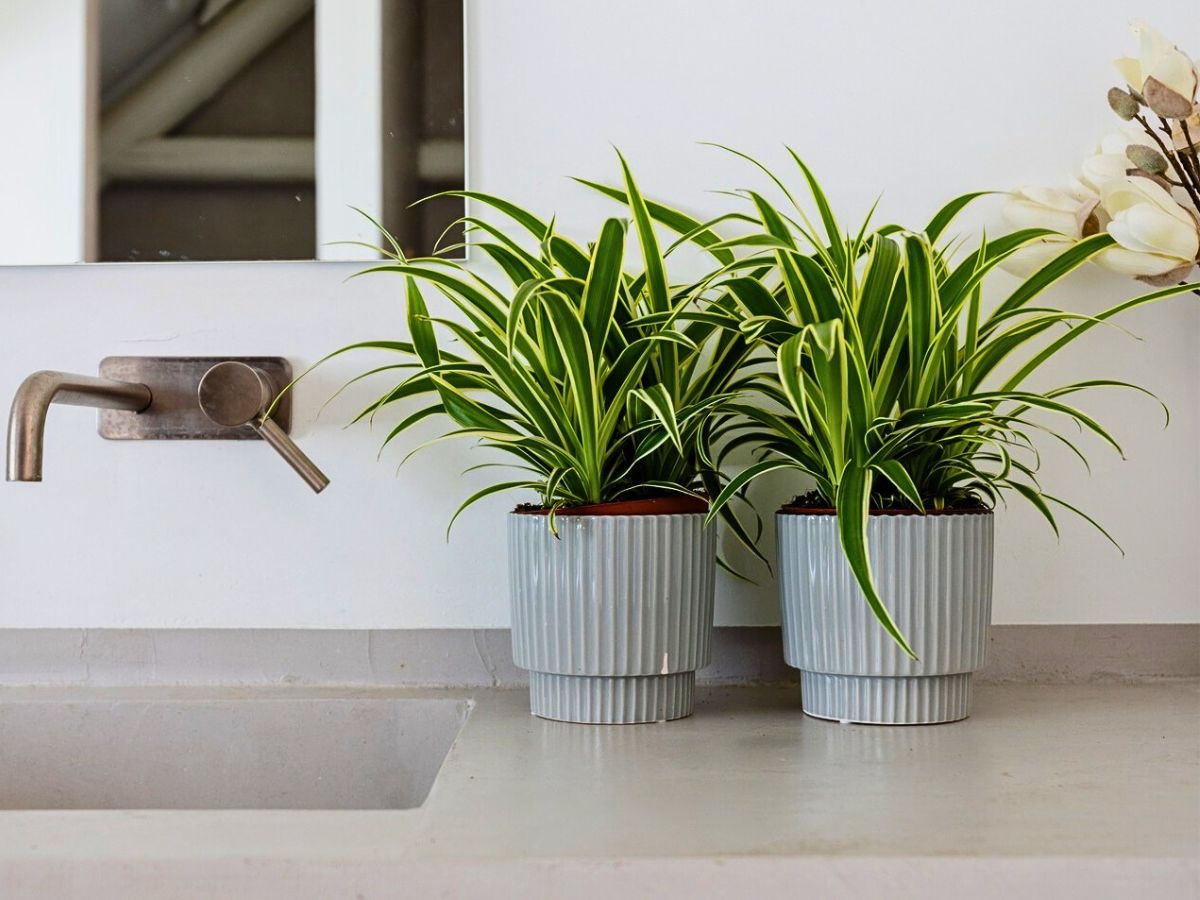
After flowering, small baby plants grow on the long offshoots, which makes the Chlorophytum a graceful hanging plant. Plus, the white leaf edges of the houseplant often become more intense in a light spot. Avoid direct sunlight, though, as the leaves may turn brown. The ideal temperature for its growth is between 18 and 25°C. This plant is also supplied by Air So Pure, a brand keen on providing high-quality air-purifying plants.
By all means, this list isn't complete, as there are numerous others, including varieties of other ferns, Dracaena, banana plants, and the bird of paradise (Strelitzia nicolai), which can be found at Air So Pure. Try any one of them and experience the difference!
Feature and header images by @airsopureplants.

